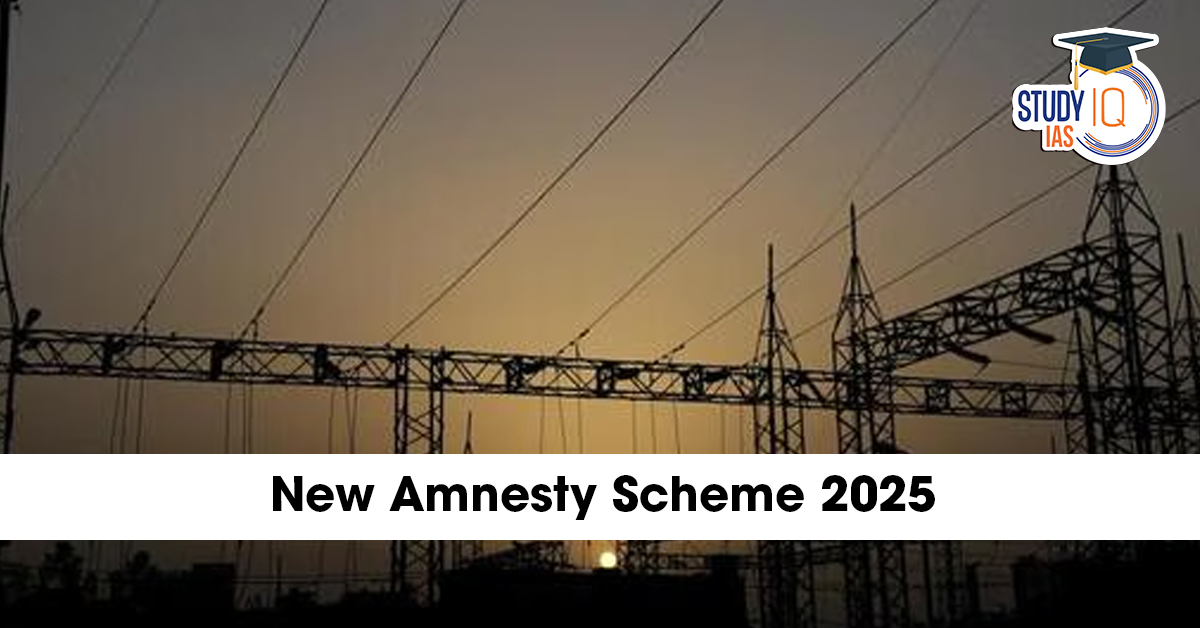Table of Contents
The Employees’ State Insurance Corporation (ESIC) has announced the New Amnesty Scheme 2025, a one-time opportunity for employers and insured persons to settle long-pending court and prosecution cases under the ESI Act.
This initiative, approved during the 196th ESIC Meeting held in Shimla under the chairmanship of Dr. Mansukh Mandaviya, Union Minister for Labour & Employment and Youth Affairs & Sports, aims to reduce litigation, promote compliance, and enhance Ease of Doing Business in India.
The scheme will remain operational from 1st October 2025 to 30th September 2026, allowing eligible entities to regularize past defaults in a transparent and time-bound manner.
Objective of the New Amnesty Scheme 2025
The Amnesty Scheme 2025 is designed with a multi-dimensional objective to:
-
Resolve long-pending ESIC-related disputes.
-
Encourage voluntary compliance with the ESI Act.
-
Reduce court case backlogs and simplify legal processes.
-
Provide financial relief to employers.
-
Reinforce the government’s mission of “Ease of Doing Business.”
“The New Amnesty Scheme 2025 is a progressive step to ensure compliance with compassion, promote transparency, and reduce litigation,” said Dr. Mansukh Mandaviya.
Duration of the Scheme
🗓 Scheme Period: 1st October 2025 – 30th September 2026
The scheme will be active for one year, providing ample time for employers to settle disputes and complete compliance formalities.
Key Features of the ESIC New Amnesty Scheme 2025
-
Comprehensive Coverage
-
Applies to court cases, prosecution cases, and compliance disputes under the ESI Act.
-
Covers closed as well as running units with pending litigation.
-
-
Structured Dispute Resolution
-
Enables employers and insured persons to settle disputes outside the court in a transparent and structured manner.
-
-
Zero Damages and Reduced Penalties
-
Most cases are exempt from damages, subject to payment of dues and interest.
-
Damages disputes can be settled by paying only 10% of the total amount.
-
-
Legal Withdrawals and Settlement Empowerment
-
Regional and sub-regional ESIC officers are fully empowered to withdraw or settle cases during the scheme period.
-
A Field-Level Committee (legal, finance, and panel advocates) will review and process each case.
-
Types of Disputes Covered under the Amnesty Scheme 2025
1. Coverage Disputes
-
Applies to closed and running units:
-
Units closed for over five years with pending cases for more than five years will have cases withdrawn.
-
Units closed within the past five years must:
-
Produce records.
-
Pay accepted dues with interest.
-
No damages will be imposed.
-
-
Running units can settle by submitting records and paying legitimate dues.
-
Cases registered voluntarily via Form-01 on the ESIC portal are excluded.
-
2. Contribution Disputes
-
Covers cases under Sections 45A, 45AA, 75, 82, or Article 226 (without complex legal questions).
-
Employers must:
-
Obtain court permission and apply in the prescribed format.
-
Pay both employer’s and employees’ contributions with interest.
-
-
Where records are missing:
-
Verification may rely on EPFO or Income Tax records.
-
In absence of such records, at least 30% of assessed contribution must be paid.
-
No damages will be imposed, but employers must provide an undertaking for future compliance.
-
3. Damages Disputes
-
Cases withdrawn on payment of 10% of determined damages where contribution and interest are already paid.
-
If ESIC has appealed to higher courts, damages as per lower court orders will be accepted and cases withdrawn.
4. Criminal Cases (Section 84)
-
Applicable to insured persons making wrong declarations:
-
Will be withdrawn if excess amounts are refunded and an undertaking is given.
-
No interest will be charged.
-
-
Cases pending for over five years, where insured persons cannot be traced, may also be withdrawn.
-
Exceptions: Cases involving fraud, forgery, or conspiracy are not eligible.
5. Prosecution Cases (Sections 85 and 85A)
-
Can be withdrawn if contribution and interest are paid as per records or alternative documents (EPFO/IT returns).
-
If no records exist:
-
Dues assessed on declared wages, SSO survey reports, or minimum wages.
-
No damages will be imposed.
-
-
Old cases under Sections 85(a) and 85(g) pending over 15 years (dues ≤ ₹25,000):
-
Closed units: Cases will be withdrawn.
-
Running units: Must update compliance and pay 30% of dues with interest.
-
-
Section 85(e): Cases for non-submission of returns may be withdrawn due to digitalization.
-
Late declaration form submissions pending for over three years may be withdrawn if compliance and accident settlements are complete.
Implementation and Monitoring
-
Regional and Sub-Regional ESIC Directors and Deputy Directors are authorized to approve settlements.
-
A review committee at the field level will assess each case for eligibility.
-
All settlements must be completed within six months of application.
-
Even entities that availed earlier amnesty schemes are eligible under the new initiative.
Benefits of the Amnesty Scheme 2025
- Reduces litigation backlog and speeds up legal resolutions.
- Encourages voluntary compliance among employers.
- Simplifies ESI-related procedures for businesses.
- Reduces financial burden by waiving damages and penalties.
- Promotes transparency in dispute settlement.
- Strengthens ESIC’s role as a progressive and employer-friendly institution.
Impact on Ease of Doing Business
The ESIC New Amnesty Scheme 2025 aligns with India’s broader policy goal of improving the Ease of Doing Business index by:
-
Streamlining compliance frameworks.
-
Reducing regulatory delays.
-
Building mutual trust between employers and government agencies.
-
Creating a fair and transparent mechanism for dispute resolution.
Conclusion
The ESIC New Amnesty Scheme 2025 marks a historic step in simplifying compliance under the Employees’ State Insurance Act. By offering an opportunity for employers and insured persons to settle cases amicably, it paves the way for a more efficient, transparent, and business-friendly environment.
This one-time initiative not only reduces legal and financial stress but also reinforces ESIC’s commitment to being a responsive, reform-oriented, and inclusive social security institution.


 Commonwealth Games Host Cities (1930–2...
Commonwealth Games Host Cities (1930–2...
 G20 Summit 2025 Johannesburg: Full Outco...
G20 Summit 2025 Johannesburg: Full Outco...

























